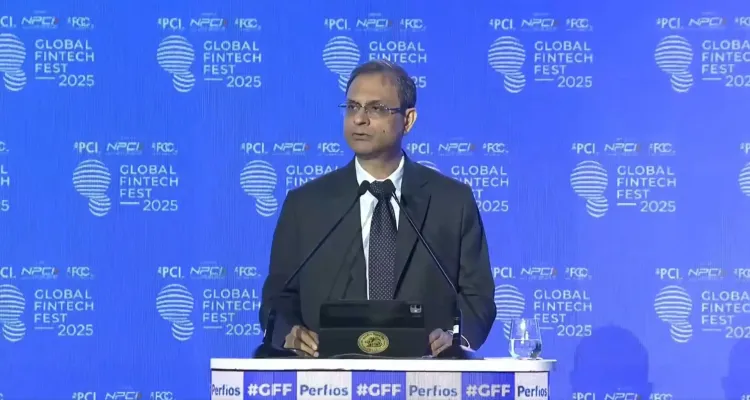Is RBI Ready with Unified Market Interface?

Synopsis
Key Takeaways
- Unified Market Interface (UMI) is being developed for easier onboarding.
- Unified Lending Interface (ULI) aims to leverage data for credit models.
- Fintechs are encouraged to design accessible products for all populations.
- Addressing digital fraud is a priority for the RBI.
- AI can significantly enhance Digital Public Infrastructure.
Mumbai, Oct 8 (NationPress) Reserve Bank of India Governor Sanjay Malhotra announced on Wednesday that the RBI has developed the concept of a Unified Market Interface (UMI), with efforts underway to establish standards for customer onboarding across digital platforms.
While speaking at the Global Fintech Fest 2025, Malhotra explained that the proposed Unified Lending Interface (ULI) is designed to leverage data to assist lenders in creating alternative credit models, similar to how UPI transformed the payments landscape.
He urged fintech companies to focus on creating products and services that are user-friendly and accessible, highlighting the importance of incorporating assistive technologies to ensure that vulnerable populations, such as the elderly, those with limited digital literacy, and individuals with disabilities, are included.
Malhotra noted that India boasts a dynamic fintech ecosystem, with nearly 10,000 entities contributing to the delivery of financial services at scale and affordability.
He also raised concerns about the rise of digital fraud, advocating for proactive measures to combat this issue.
The RBI Governor emphasized that artificial intelligence (AI) could significantly improve the next generation of Digital Public Infrastructure (DPI).
He presented a five-point strategy for fintechs aimed at promoting financial inclusion and accelerating digitalization within the economy.
Malhotra called for enhancements in access for underdeveloped areas of India, promoting the design of intuitive products for populations with lower digital literacy.
He encouraged a customer-centric approach, advocating for seamless experiences that minimize the need for customer support, thereby reducing obstacles and enhancing user engagement.
Moreover, he stressed the importance of extending the benefits of digital payments to small businesses and other underserved communities by exploring innovative products and services that improve financial accessibility.
Malhotra concluded by stating that compliance, data protection, transparency, and robust safeguards must be central to product design, fostering user confidence.









